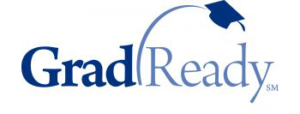Financial Wellness
 Vanderbilt University now provides an optional free tool called GradReady which includes information for managing tuition, budgets, and bills. Once on their site, you will need to create an account. This account provides access to this financial wellness tool while you’re a student, and after you leave Vanderbilt. It is designed to help you understand your financial aid and manage your finances. The tool offers three paths: Path 1 — Paying for College, Path 2 — Money Management, and Path 3 — Real-World Finance.
Vanderbilt University now provides an optional free tool called GradReady which includes information for managing tuition, budgets, and bills. Once on their site, you will need to create an account. This account provides access to this financial wellness tool while you’re a student, and after you leave Vanderbilt. It is designed to help you understand your financial aid and manage your finances. The tool offers three paths: Path 1 — Paying for College, Path 2 — Money Management, and Path 3 — Real-World Finance.
MD Students have another tool available to them for use for financial wellness. AAMC’s FIRST (Financial Information, Resources, Services, and Tools) provides information about how to pay for medical school, manage your finances during medical school, or determine your loan repayment options after medical school. Students in the MD program may sign up for a free account to start building their financial futures!
Credit Reports
The Federal Direct Graduate PLUS Loan and private loans require a credit check. It is important to maintain credit worthiness in order to qualify for borrowing needed for your medical education as well as in future years. Having good credit is also vital to many of life’s most important purchases, including financing a home or car, and some employers will not offer jobs to candidates with poor credit. It is recommended that you request a copy of your credit report from a credit bureau to make sure there are no problems. You may request a free credit report at www.annualcreditreport.com. It’s smart to check all three reports at least annually, because they may have slightly different data. Changes you don’t expect or did not authorize can tip you off to a mistake or to identity theft.